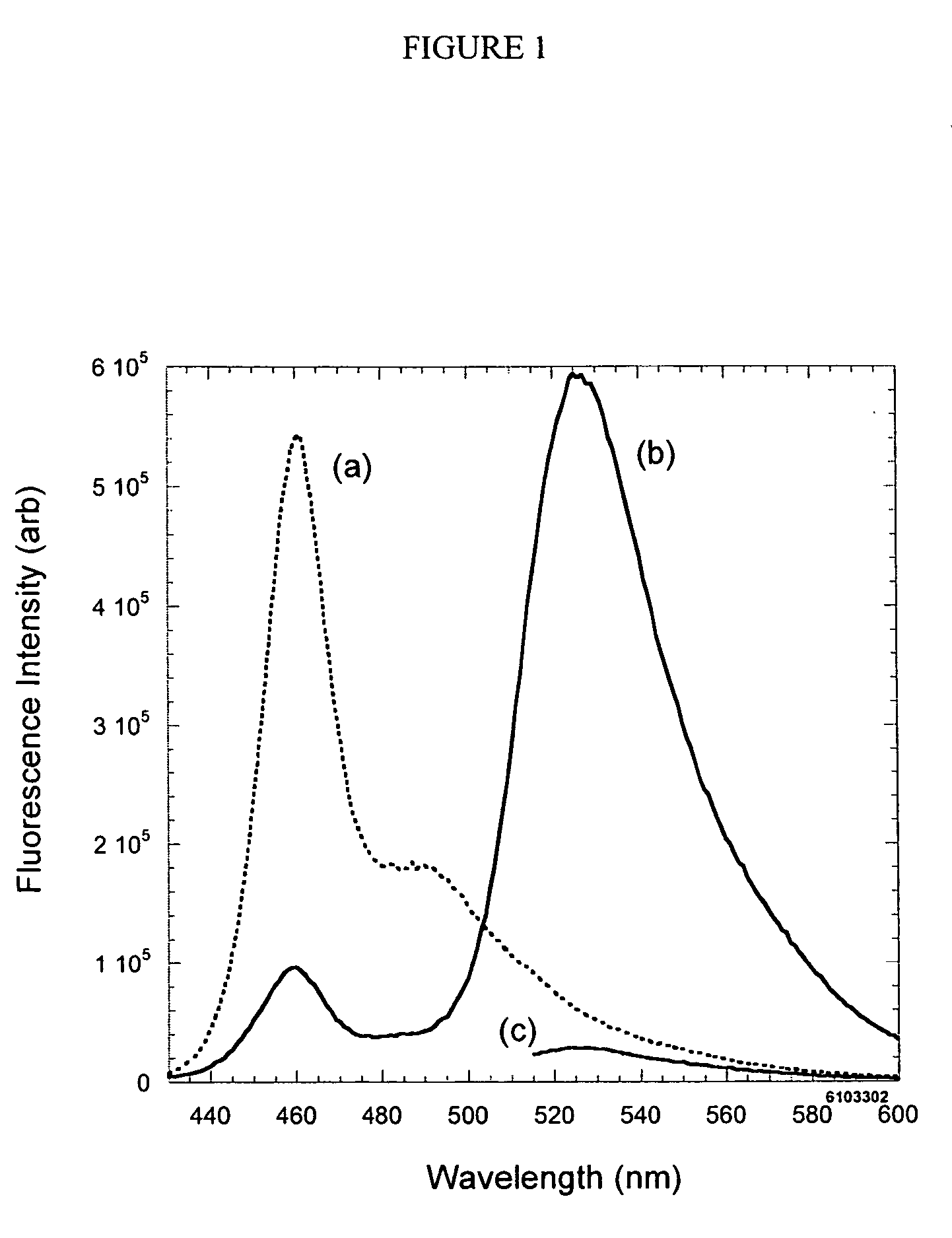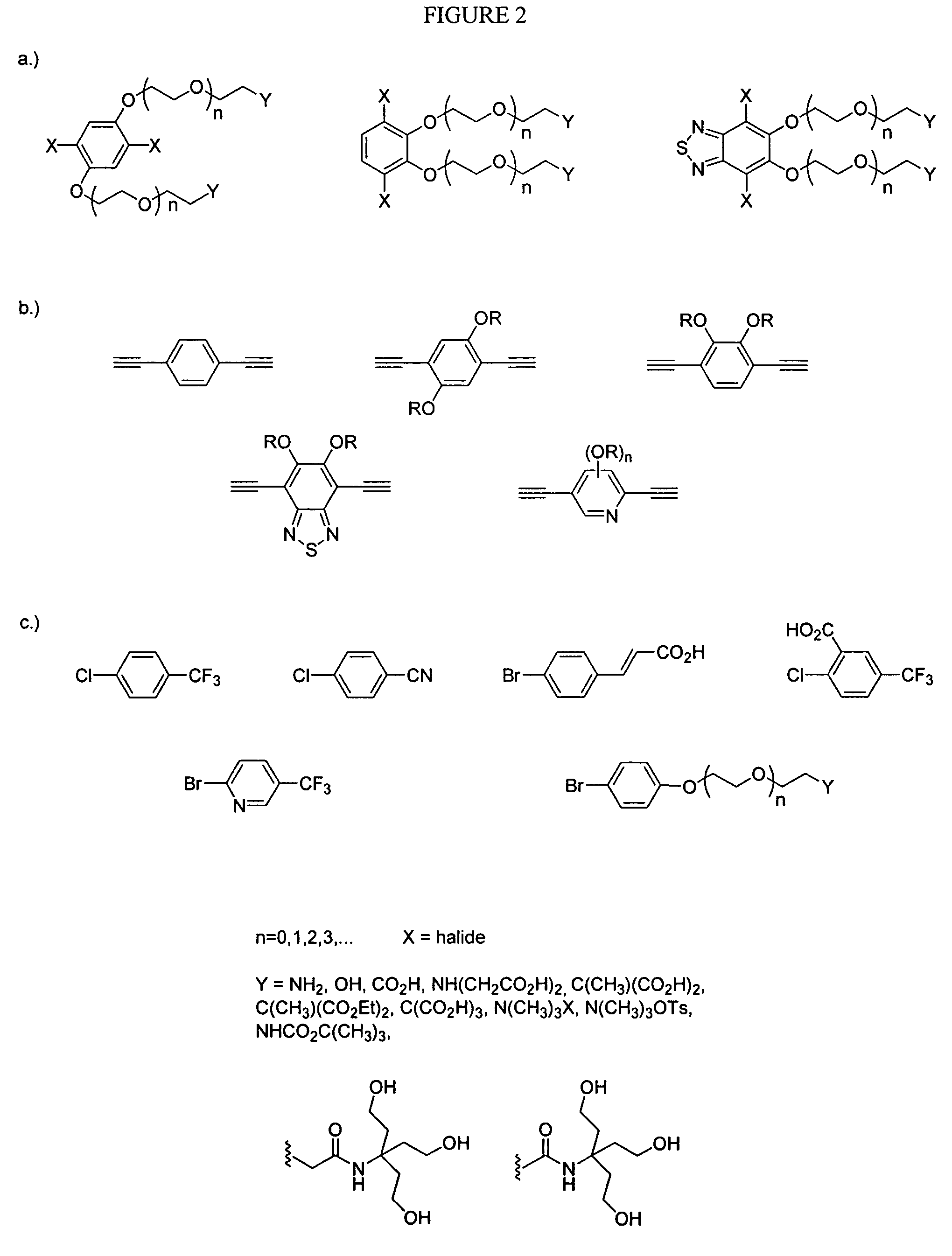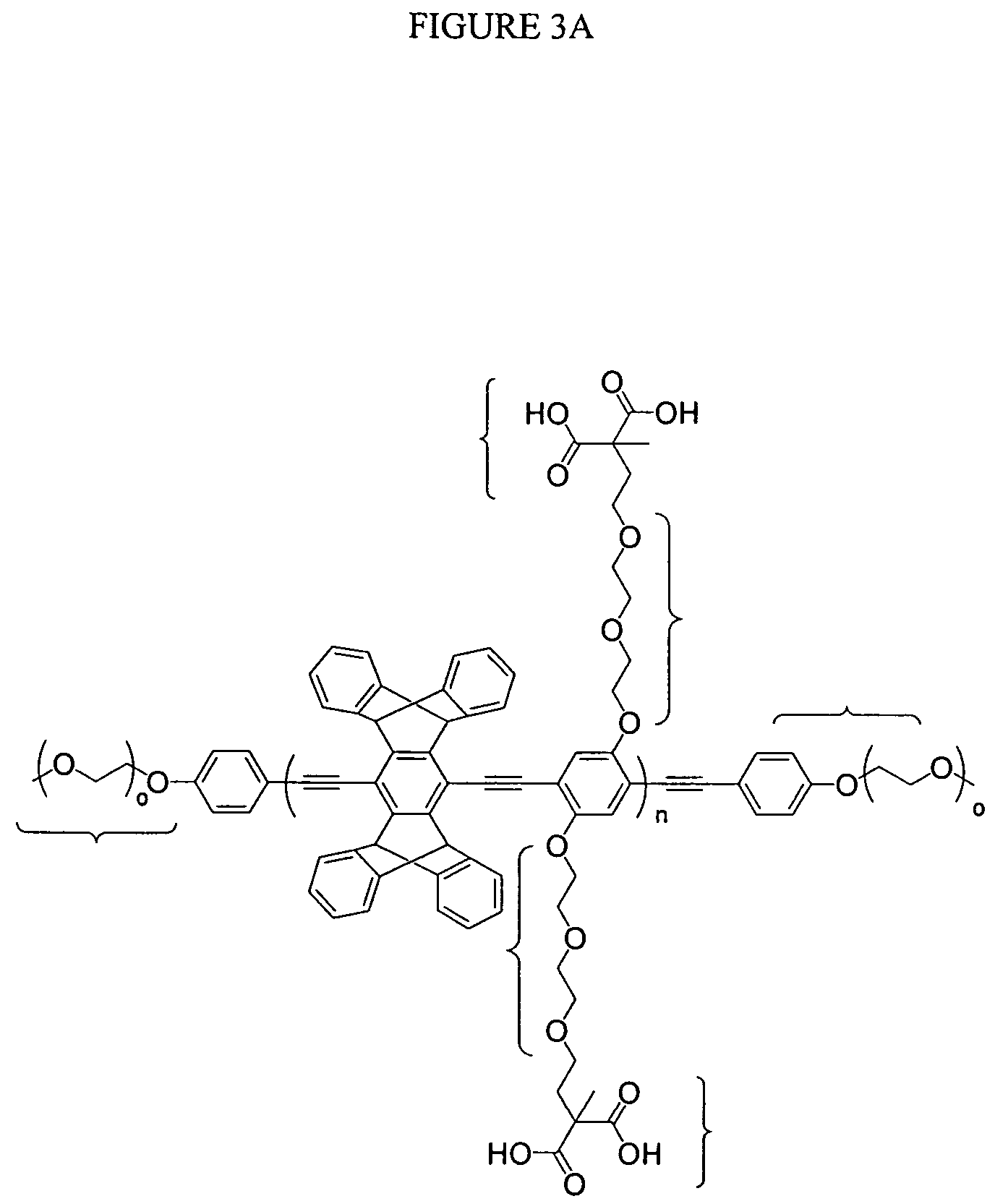Emissive species for clinical imaging
a technology of emissive species and clinical imaging, applied in the field of emissive species for clinical imaging, can solve the problems of limiting the use of emissive species in long-term imaging of live cells, difficult long-term monitoring, toxic, etc., and achieves the effects of reducing intermolecular - interactions, high fluorescent intensity, and relaxing constraints on nanoparticle fabrication
- Summary
- Abstract
- Description
- Claims
- Application Information
AI Technical Summary
Benefits of technology
Problems solved by technology
Method used
Image
Examples
example 1
Synthesis of Monomers with Terminal Malonic Esters
[0075]FIG. 5 shows examples of the syntheses of monomers having malonic esters at the terminal end of PEG side chains. FIG. 5A shows the synthesis of di-iodide monomer 8 having para-substituted side-chains. First, the phenolic groups of diiodohydroquinone may be alkylated with hydroxy-terminated PEG groups to give compound 6. Conversion of the terminal hydroxyl groups to tosyl groups gives compound 7, followed by substitution of the tosyl groups with malonic esters to afford monomer 8.
[0076]FIG. 5B shows the synthesis of dibromobenzathiadiazole monomer 11 having meta-substituted side chains containing malonic ester groups. Dihydroxybenzene may be first alkylated with hydroxy-terminated PEG groups and then nitrated using methods known in the art to give di-nitro compound 9. Reduction of the nitro groups followed by treatment with thionyl chloride would afford benzothiadiazole 10. Subsequent bromination and installation of the terminal...
example 2
Synthesis of 12
[0077]
[0078]To a triple-necked 2 L round bottom flask was added diiodohydroquinone (80.0 g, 220 moles, 1 eq.), potassium carbonate (122.3 g, 880 moles, 4 eq.), and acetone (1000 mL, 1.0 g / 12.5 mL, [0.22 M]). The central neck of the flask was equipped with a mechanical stirrer while one side neck was equipped with a rubber septum and the other was equipped with a reflux condenser, rubber septum and a bubbler. The suspension was stirred and sparged with Argon for 30 minutes. The rubber septum was briefly removed and sodium iodide (1 g) was added to the reaction mixture. The rubber septum was replaced and the suspension was sparged again with Argon for an additional 20 minutes. To a 250 mL dripping column a mixture of chloroethoxy ethanol (94 mL, 109.6 g, 880 moles, 4 eq.) and acetone (106 mL) was added and this column replaced the rubber septum on the triple necked round bottom flask. The flask was flushed with argon for 20 minutes. Argon flushing was then discontinued ...
example 3
Synthesis of 13
[0080]
[0081]To a 500 mL round bottom flask equipped with a septum, bubbler and stir bar was added 1 (10.0 g, 18.6 mmol, 1 eq.) and 200 mL of dichloromethane (20 mL / g). The flask was sparged with Argon for 10 min. with stirring. Triethylamine (8.2 mL, 111 mmol, 6 eq.) was then poured in and reaction mixture was sparged for 10 more minutes followed by the addition of p-TsCl (10.6 g, 55.6 mmol, 3 eq.) and 10 more minutes of sparging. Argon sparging was then discontinued and reaction progressed over night at room temperature.
[0082]The reaction mixture was cooled, and then washed with 600 mL of 1M HCl. Organic layer was combined and then washed in 250 mL of brine and water. Organic layer was then dried over magnesium sulfate, and concentrated. To this crude product was added 150 mL of methanol and a stir bar and the flask was heated to boiling with stirring. The suspension was then suction filtered to obtain a brown powder. Yield=5.4 g (34%). Product has an Rf value of 0.6...
PUM
| Property | Measurement | Unit |
|---|---|---|
| molecular weight | aaaaa | aaaaa |
| molecular weight | aaaaa | aaaaa |
| molecular weight | aaaaa | aaaaa |
Abstract
Description
Claims
Application Information
 Login to View More
Login to View More - R&D
- Intellectual Property
- Life Sciences
- Materials
- Tech Scout
- Unparalleled Data Quality
- Higher Quality Content
- 60% Fewer Hallucinations
Browse by: Latest US Patents, China's latest patents, Technical Efficacy Thesaurus, Application Domain, Technology Topic, Popular Technical Reports.
© 2025 PatSnap. All rights reserved.Legal|Privacy policy|Modern Slavery Act Transparency Statement|Sitemap|About US| Contact US: help@patsnap.com



